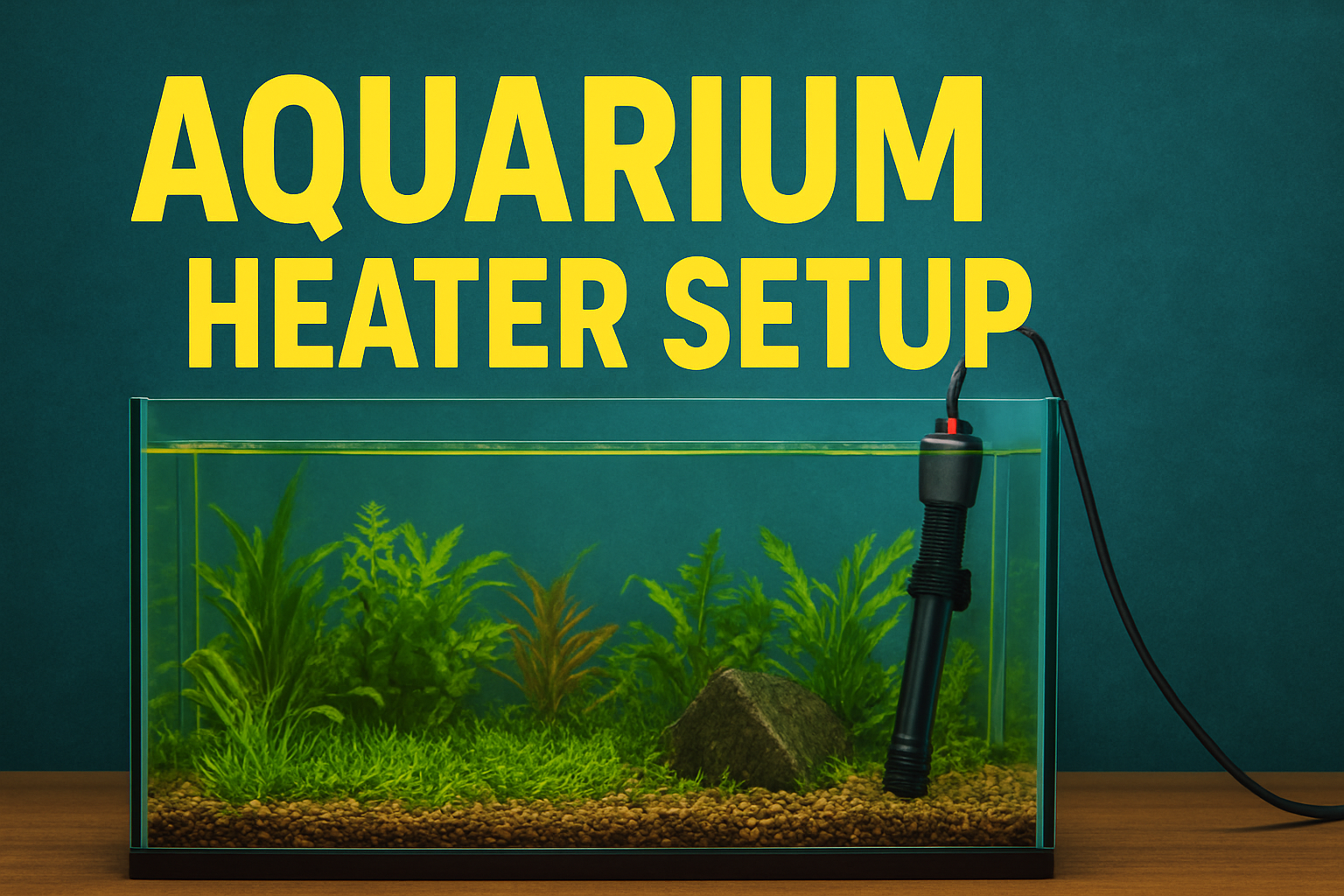Setting up an aquarium heater correctly is one of the most crucial steps in ensuring the comfort, health, and longevity of your aquarium fish. Just like humans, fish thrive best when they live in stable and suitable temperatures. While some species prefer cooler water, most tropical fish need a consistent warm environment. Without the right aquarium heater setup, fluctuations in temperature can stress fish, compromise their immune systems, and even cause premature deaths.
In this comprehensive guide, we’ll cover everything you need to know about aquarium heater setup, including the types of heaters, how to choose the right size, placement tips, temperature monitoring, troubleshooting, and maintenance practices.
Why an Aquarium Heater Is Essential
An aquarium heater ensures your fish live in an environment that mimics their natural habitat. Here’s why a heater is important:
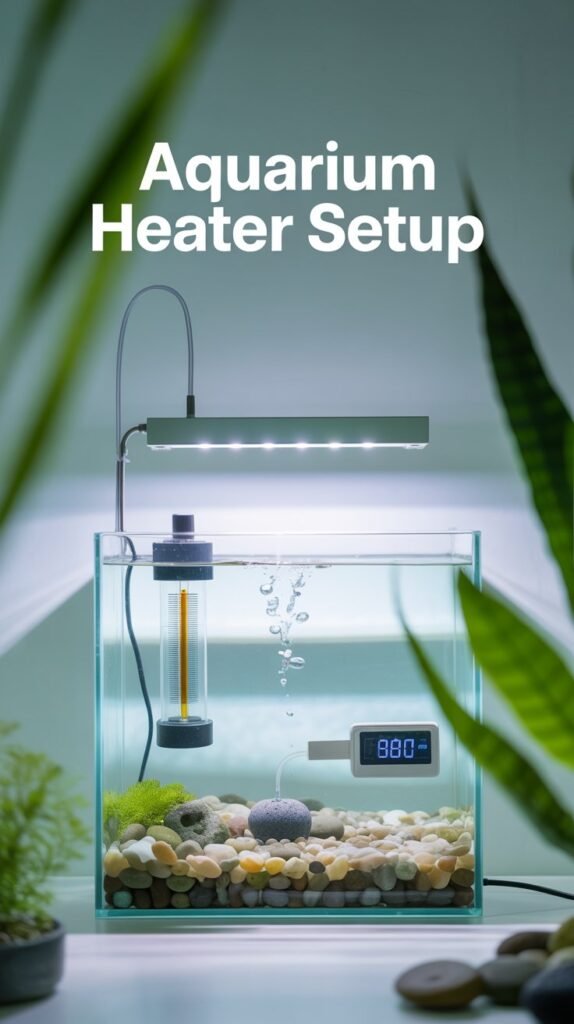
- Temperature Stability: Fish are cold-blooded animals. They rely on external temperatures to regulate their body functions. A heater prevents drastic fluctuations.
- Species Compatibility: Tropical fish such as guppies, angelfish, and tetras require warmer temperatures (usually between 75°F–82°F / 24°C–28°C).
- Stress Prevention: Fluctuating or incorrect temperatures can cause stress, making fish more vulnerable to diseases.
- Breeding Success: Stable temperatures encourage breeding behaviors in many species.
Types of Aquarium Heaters
When planning your aquarium heater setup, you must choose from several heater types. Each has unique benefits:
1. Submersible Heaters
- Description: Fully submersible and placed underwater, typically along the back wall of the aquarium.
- Pros: Even heating, efficient, easy to conceal.
- Cons: Glass models can break if not handled carefully.
2. Immersible Heaters
- Description: Hang on the tank’s edge with the heating element inside the water.
- Pros: Affordable and easy to install.
- Cons: Less efficient, not suitable for larger tanks.
3. Substrate Heaters
- Description: Heating cables placed under the substrate (gravel or sand).
- Pros: Great for planted aquariums, promotes root growth.
- Cons: Expensive, harder to install or adjust.
4. In-Line Heaters
- Description: Installed along the aquarium’s water return line in external filters.
- Pros: Hidden from view, efficient heating, great for large tanks.
- Cons: Requires external filtration setup, higher cost.
5. In-Filter Heaters
- Description: Integrated directly into a filter system.
- Pros: Saves space, heats water while filtering.
- Cons: Limited to compatible filter types.
Choosing the Right Aquarium Heater Size
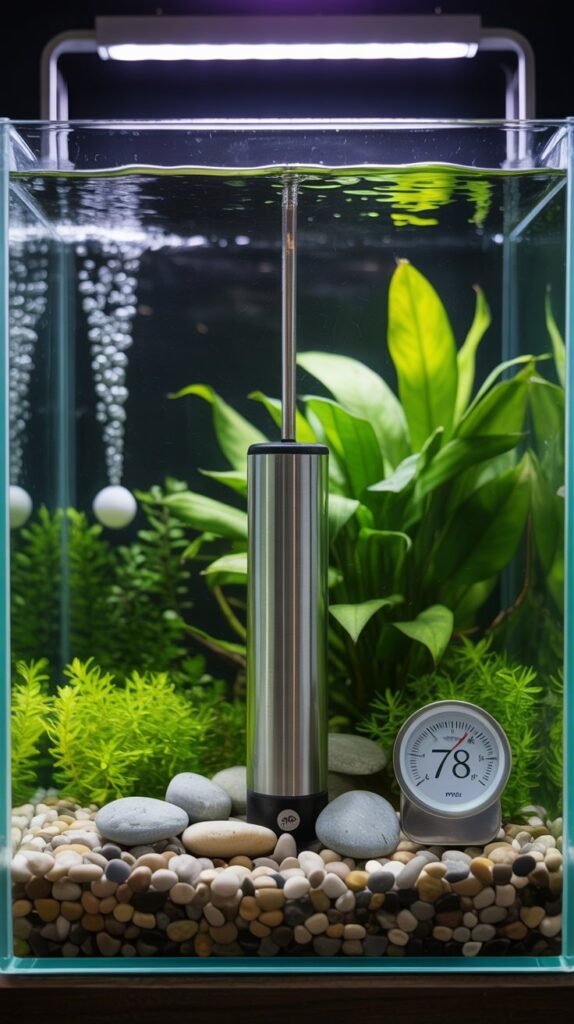
Heater size depends on your tank’s volume. A general rule is 3–5 watts per gallon of water.
| Tank Size (Gallons) | Heater Wattage Recommendation |
|---|---|
| 5 – 10 | 25 – 50 watts |
| 10 – 20 | 75 – 100 watts |
| 20 – 40 | 100 – 200 watts |
| 40 – 75 | 200 – 300 watts |
| 75+ | 2 heaters, 300 watts each |
For larger tanks, it’s often better to use two smaller heaters instead of one large one. This ensures even heating and provides a backup if one fails.
Step-by-Step Aquarium Heater Setup
Setting up an aquarium heater properly is simple if done carefully.
Step 1: Choose the Right Heater
Select a heater suitable for your tank size and fish species.
Step 2: Place the Heater Correctly
- Position submersible heaters horizontally or vertically near the filter’s water flow.
- Ensure water circulates around the heater for even distribution.
- Avoid placing heaters too close to decorations or substrate, which can block heat.
Step 3: Install a Thermometer
Always use a separate thermometer to monitor water temperature. Place it at the opposite side of the heater for accuracy.
Step 4: Allow Heater to Adjust
Before plugging in, let the heater sit in the tank water for 20–30 minutes. This prevents glass breakage due to sudden temperature changes.
Step 5: Set the Temperature
Adjust the heater’s dial to the desired temperature. For tropical fish, aim for 75–80°F (24–27°C).
Step 6: Plug In and Monitor
Turn on the heater and check temperature consistency for the next 24–48 hours before adding fish.
Ideal Aquarium Temperatures for Common Fish
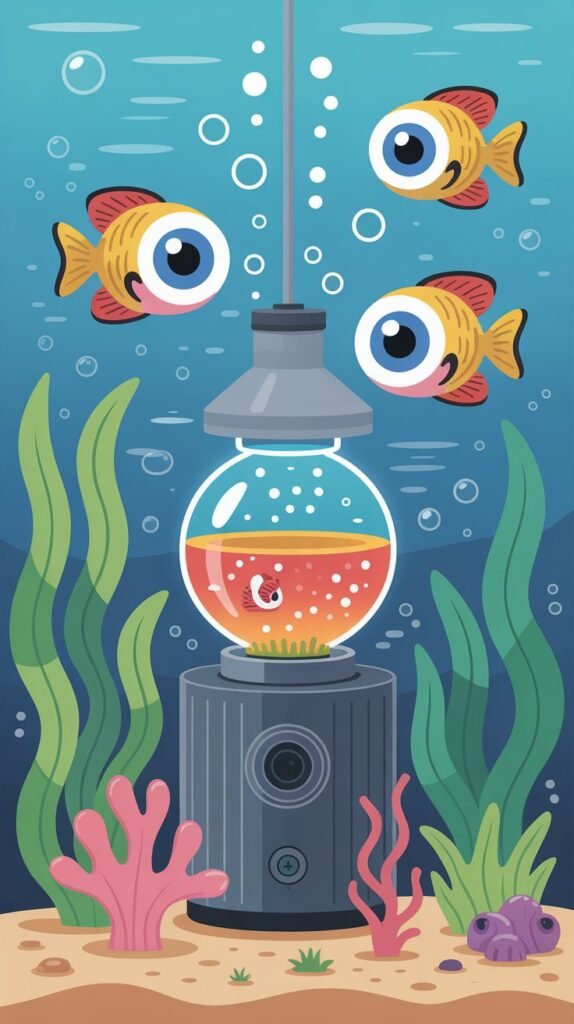
- Goldfish: 65–75°F (18–24°C) – usually don’t need heaters.
- Betta Fish: 76–82°F (24–28°C).
- Guppies: 74–82°F (23–28°C).
- Tetras: 75–80°F (24–27°C).
- Angelfish: 76–82°F (24–28°C).
- Discus: 82–86°F (28–30°C).
Common Mistakes in Aquarium Heater Setup
- Not using a thermometer – relying only on the heater’s built-in setting can cause inaccuracies.
- Placing heater incorrectly – poor placement may lead to uneven heating.
- Skipping acclimation period – plugging in immediately can cause cracks.
- Using undersized heater – a weak heater will constantly run and may not maintain stable temperature.
- Ignoring water circulation – stagnant water leads to cold spots.
Maintenance and Safety Tips
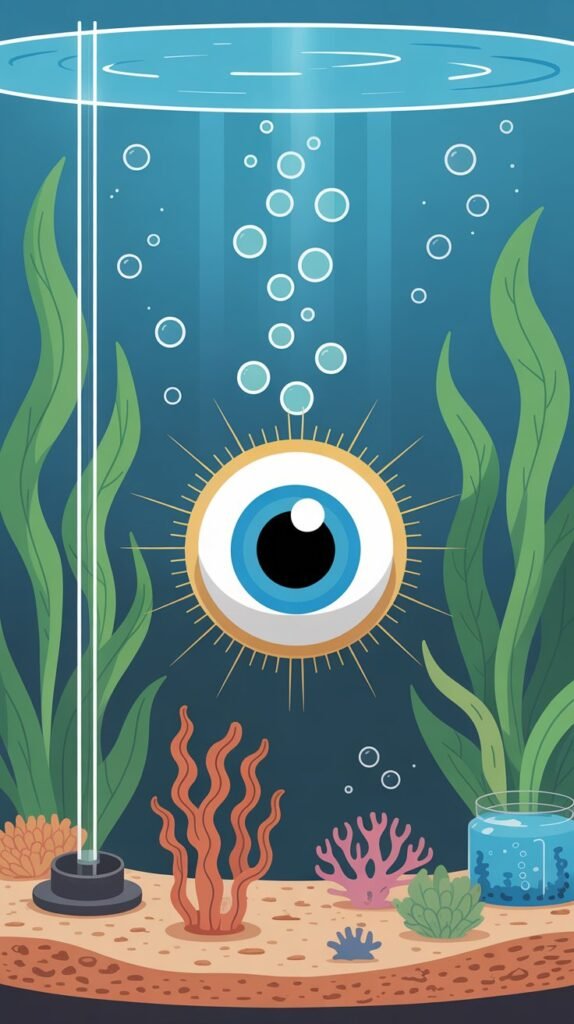
- Regularly check temperature using a thermometer.
- Clean heaters of algae and mineral buildup.
- Inspect for damage like cracks or malfunctioning lights.
- Unplug before water changes to prevent heater shock.
- Use a heater guard to protect fish from burns.
- Replace old heaters every 2–3 years, even if they still function.
Troubleshooting Heater Problems
- Water too cold: Heater may be undersized or broken.
- Water too hot: Thermostat malfunction or heater stuck “on.”
- Uneven temperature: Poor placement or weak water circulation.
- Heater not turning on: Check power supply, settings, or replace faulty unit.
Advanced Tips for Aquarium Heater Setup
- Dual Heater System: Use two smaller heaters for redundancy.
- Controller Use: External temperature controllers prevent overheating.
- Smart Heaters: Some models come with Wi-Fi controls for monitoring remotely.
- Backup Power: Use UPS or battery backup in case of power outages.
Conclusion
An aquarium heater setup is essential for maintaining a stable and healthy environment for your fish. From choosing the right type of heater to ensuring proper placement and maintenance, each step plays a vital role in the well-being of your aquatic pets. A correctly installed heater not only prevents stress and disease but also enhances breeding and activity levels. With proper care and attention, your fish will thrive in a stable, warm, and safe habitat.
FAQs on Aquarium Heater Setup
Q1. Do all aquariums need heaters?
No. Cold-water fish like goldfish don’t usually need heaters, but tropical fish require them.
Q2. Can I place the heater horizontally?
Yes, many submersible heaters can be placed horizontally near the substrate for even heat distribution.
Q3. How long does it take for an aquarium heater to warm the water?
It may take 24–48 hours to stabilize, depending on tank size and room temperature.
Q4. Should I turn off the heater during water changes?
Yes, always unplug the heater before water changes to prevent damage and electrical hazards.
Q5. How do I know if my heater is working?
Check if the indicator light turns on, and use a thermometer to confirm water temperature.
Q6. Can heaters harm fish?
Direct contact can burn fish, which is why using a heater guard is recommended.
Q7. What’s the lifespan of an aquarium heater?
Most heaters last 2–3 years, but high-quality models can last longer with proper care.
Q8. Should I use more than one heater in my aquarium?
Yes, for large tanks, two heaters ensure even distribution and act as backups in case one fails.

